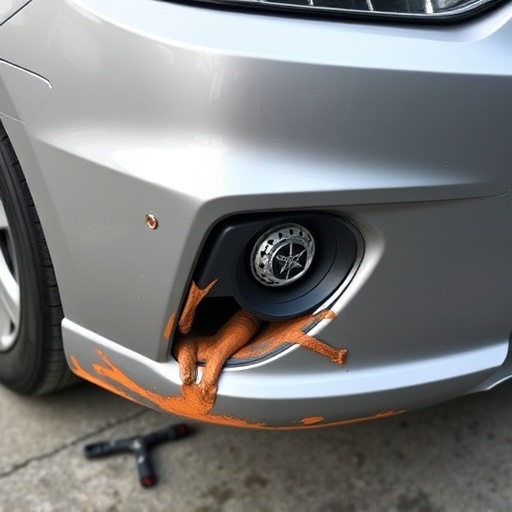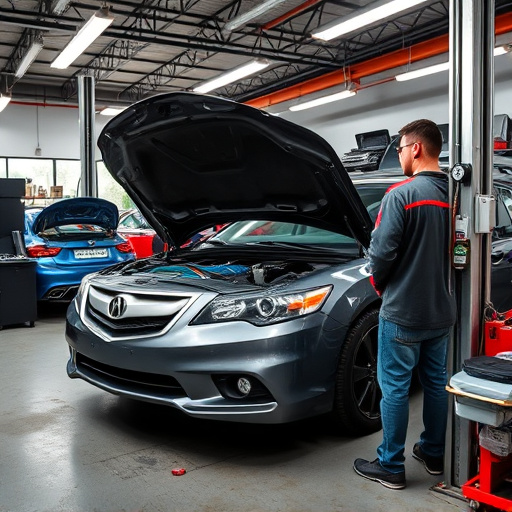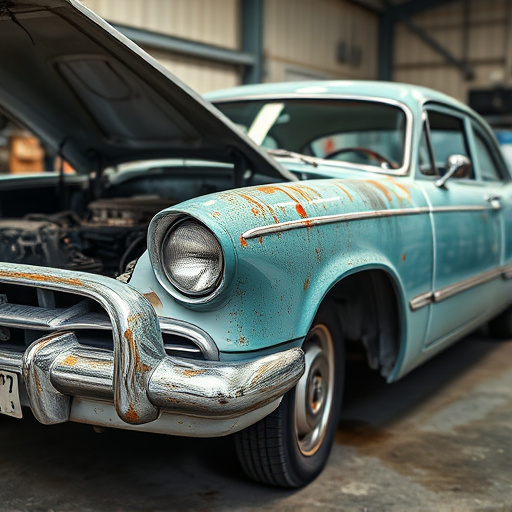Quality Repair Craftsmanship: Key to Longevity in Vehicles

Top-tier repair craftsmanship quality is vital for extending vehicle lifespan and durability. Skille…….
In an era where precision, sustainability, and innovation converge, the concept of repair craftsmanship quality emerges as a cornerstone for industries seeking excellence. This article delves into the multifaceted world of repair craftsmanship, exploring its definition, global impact, economic implications, technological enhancements, regulatory framework, challenges, and the inspiring future it holds. By examining these aspects, we aim to equip readers with a comprehensive understanding of why repair craftsmanship quality is not merely a niche concern but a vital strategy for long-term success in an ever-evolving market.
Definition: Repair craftsmanship quality refers to the meticulous skill, precision, and expertise employed in repairing and maintaining products, ensuring their longevity, functionality, and performance. It involves a blend of traditional handcrafting techniques and modern technological advancements to deliver top-tier results. This concept transcends mere fixing; it is about revitalizing and restoring items to their optimal state, often with enhanced features for improved user experience.
Core Components:
Technical Proficiency: Craftspeople skilled in various repair techniques, from intricate disassembly to specialized welding or sewing, are essential. Continuous training ensures they stay abreast of new technologies and methods.
Attention to Detail: Every part of the repair process demands meticulous care. From identifying issues to selecting appropriate materials and tools, every detail influences the final outcome.
Sustainability Focus: Emphasizing eco-friendly practices in repairs encourages recycling, upcycling, and reducing waste, contributing to a greener economy.
Customer Satisfaction: Quality repairs not only fix products but also rebuild customer trust and loyalty. Excellent service, transparency, and after-sales support are integral to this process.
Historical Context:
The art of repair craftsmanship has deep roots in human history, dating back to ancient civilizations where skilled artisans mended tools, weapons, and everyday items. With industrialization, mass production overshadowed these practices until recent years when a renewed focus on sustainability and individuality prompted a revival. Today, repair craftsmanship quality is recognized as a crucial element in several sectors, from manufacturing and automotive to electronics and fashion.
The concept of repair craftsmanship quality has permeated every corner of the globe, driven by increasing awareness of sustainability, cost-effectiveness, and product longevity. Key trends shaping this landscape include:
European Union’s Circular Economy Package: This EU initiative promotes sustainable practices across industries, encouraging manufacturers to design products for durability and reparability. The “Right to Repair” legislation in some EU countries is a significant step towards empowering consumers and fostering repair craftsmanship.
North American Trend Towards DIY Repairs: In the US and Canada, there’s a growing movement encouraging individuals to take on product repairs themselves. This trend not only drives demand for high-quality repair services but also fosters a sense of community and skill development.
Asian Market Leadership in Electronics Repair: Countries like Japan and South Korea have long been renowned for their meticulous craftsmanship in electronics repair, setting global standards. These markets are now expanding their expertise to emerging technologies, such as repairing advanced semiconductors.
The global repair services market is experiencing robust growth, driven by factors like rising product complexity, shorter product lifespans, and increasing consumer demand for personalized, sustainable solutions. According to a 2022 report by Grand View Research, the global repair services market size was valued at USD 186.9 billion in 2021 and is expected to grow at a CAGR of 7.5% from 2022 to 2030.
Manufacturers are increasingly investing in repair infrastructure, training programs, and advanced repair equipment to meet market demands. For instance, major electronics brands have set up dedicated repair centers worldwide, recognizing the financial benefits of extending product lifespans.
Repair craftsmanship quality contributes significantly to economic systems by:
Job Creation: It fosters a skilled workforce, from craftspeople to technicians, creating employment opportunities and supporting local economies.
Reduced E-waste: Encouraging repairs can substantially decrease electronic waste, saving resources and lowering environmental impact.
Extended Product Lifespan: Quality repairs extend product life, delaying obsolescence and reducing the need for frequent replacements, thereby stabilizing market dynamics.
Technological innovations have revolutionized repair craftsmanship, offering unprecedented precision, efficiency, and accessibility:
3D Printing: This technology enables on-demand manufacturing of custom parts, making repairs faster and more cost-effective. It is particularly useful for complex or rare components.
Augmented Reality (AR) and Virtual Reality (VR): AR and VR tools provide immersive training experiences for craftspeople, allowing them to practice intricate repairs in a virtual environment before working on real products.
Advanced Diagnostic Tools: Sophisticated diagnostic equipment can quickly identify issues within electronic devices, streamlining repair processes and minimizing downtime.
Robotic Assistance: Robots are increasingly used for repetitive tasks, enhancing precision and consistency in assembly and repair processes.
Governments worldwide play a pivotal role in shaping the future of repair craftsmanship quality through policies and regulations:
Warranty and Return Policies: Many countries have implemented strict warranty regulations, requiring manufacturers to honor product repairs or replacements, fostering consumer trust.
E-waste Management: Strict e-waste disposal and recycling laws encourage responsible repair practices, as proper disposal becomes more feasible when products are repaired rather than replaced.
Right to Repair: As mentioned earlier, several EU countries have enacted “Right to Repair” laws, mandating manufacturers to provide accessible repair information and services for their products. Similar initiatives are gaining traction in other regions.
Skill Development Programs: Governments invest in training programs to upskill the workforce, ensuring a competent pool of craftspeople capable of handling complex repairs.
Despite its numerous benefits, repair craftsmanship quality faces several challenges:
Rapid Technological Changes: Keeping up with rapidly evolving technologies can be demanding for traditional repair services, requiring continuous training and investment in new tools.
Manufacturer Resistance: Some manufacturers resist transparent repair practices, fearing potential liability issues or perceived damage to their brand image. Encouraging collaboration between brands and repair communities is crucial to overcoming this.
Accessibility of Parts: Obtaining authentic replacement parts can be challenging for independent repair shops, especially for older or specialized products. Streamlining supply chains and fostering part-sharing communities can address this issue.
Solutions and Strategies:
Apple has been a pioneer in promoting repair craftsmanship quality, particularly through its innovative “Repair and Reuse” program. This initiative offers customers low-cost repairs and encourages the use of refurbished parts, extending device lifespans. Apple provides detailed repair manuals and training to its technicians, ensuring consistent quality across its global service providers.
In many cities, local repair communities have emerged as powerful forces for change. For instance, “Fixing Cities” is a global movement that brings together volunteers passionate about repairing and refurbishing items. These communities organize workshops, share knowledge, and promote the art of repair, fostering sustainability and skill development within their locales.
The fashion industry, known for its fast-paced nature, is embracing repair craftsmanship quality. Brands like Patagonia offer repair services for their products, encouraging customers to send in worn items for mending or upcycling. This approach not only extends garment lifespans but also reduces the environmental impact of textile waste.
The future of repair craftsmanship quality is brimming with potential growth areas and emerging trends:
Advanced Materials: The development of new materials, such as bio-based composites and advanced polymers, will offer repair communities a wider range of options for sustainability and innovation.
Internet of Things (IoT) Integration: As IoT devices become more prevalent, repairing them will require specialized skills and knowledge. Craftspeople will need to adapt to this evolving landscape, offering repairs for smart home devices, wearables, and connected cars.
Global Collaboration: The repair community is increasingly connecting globally through digital platforms and social media. This trend fosters knowledge sharing, enables access to rare parts, and promotes the exchange of best practices, creating a powerful global network.
Personalized Repairs: With a rise in customized products, from 3D-printed accessories to tailored clothing, repair services will need to offer personalized solutions, ensuring each item is restored to its unique specifications.
Repair craftsmanship quality is not just a niche concern but a critical strategy for industries aiming for long-term success and sustainability. By embracing technological advancements, fostering global collaboration, and addressing challenges through innovative policies, we can revolutionize the way products are repaired, maintained, and cherished. This article has highlighted the vast potential of repair craftsmanship, from its historical roots to its future prospects, emphasizing its essential role in shaping a more sustainable world.
Q: How does repair craftsmanship quality benefit consumers?
A: It ensures products are repaired to high standards, extending their lifespan, saving consumers money, and promoting sustainability. Additionally, it provides peace of mind, knowing that repairs are done expertly and with transparency.
Q: Can repair services be as reliable as manufacturer-driven repairs?
A: Absolutely! Independent repair shops often use original parts or certified equivalents, ensuring quality and compatibility. Properly trained craftspeople can offer specialized knowledge and personalized service, sometimes at a lower cost than manufacturers.
Q: What role does repair craftsmanship quality play in the circular economy?
A: It is a cornerstone of the circular economy, promoting sustainability by extending product lifespans, reducing waste, and encouraging recycling. By repairing items, we give them new life, minimizing the demand for virgin resources and lowering environmental impact.
Q: How can manufacturers support repair craftsmanship quality?
A: Manufacturers can collaborate with repair communities, providing access to repair information and parts. Offering transparent warranties and return policies builds consumer trust. Additionally, designing products for durability and reparability is crucial, ensuring they last longer and are more appealing to consumers.

Top-tier repair craftsmanship quality is vital for extending vehicle lifespan and durability. Skille…….

The quality of repair craftsmanship is crucial for successful and long-lasting repairs, from car col…….

The quality of repair craftsmanship is a defining factor in collision repair, significantly impactin…….

High-quality repair craftsmanship significantly impacts vehicle resale value, especially for luxury…….

Elevating repair craftsmanship quality within collision repair centers fosters technician motivation…….

Advanced technology, including CAD systems, real-time data analysis, robotic arms and automated tool…….

Attention to detail is crucial for achieving high repair craftsmanship quality in auto body repairs……..

Gathering customer feedback is a powerful strategy for auto repair businesses, enabling them to enha…….

Top-tier auto body shops prioritize repair craftsmanship quality through skilled technicians, standa…….

Skilled collision repair technicians drive innovation in auto body shops by maintaining exceptional…….